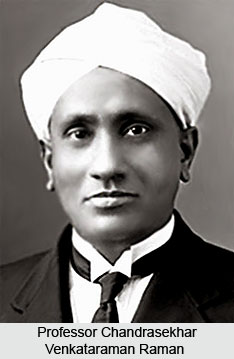 The Indian Academy of Sciences aims at promoting the progress and upholding the cause of science in pure and applied branches. Major activities of the Academy include publication of scientific journals and special volumes, organizing meetings of the Fellowship and discussions on important topics, recognizing scientific talent, improvement of science education and taking up other issues of concern to the scientific community.
The Indian Academy of Sciences aims at promoting the progress and upholding the cause of science in pure and applied branches. Major activities of the Academy include publication of scientific journals and special volumes, organizing meetings of the Fellowship and discussions on important topics, recognizing scientific talent, improvement of science education and taking up other issues of concern to the scientific community.
Formation of Indian Academy of Sciences
The Academy was founded in 1934 by Professor Chandrasekhar Venkataraman Raman and was registered as a Society under the Societies Registration Act, on 24 April 1934. The formal inauguration took place on 31 July 1934 with 65 founding fellows. On the same day, the first general meeting of Fellows was held at which C. V. Raman was elected its President, and the draft constitution of the Academy was approved and adopted. The first issue of the Academy "Proceedings" appeared in two sections in July 1934. Since then, the "Proceedings" were split into theme journals and several new ones added. The Academy presently has over 950 Fellows, nearly 50 Honorary Fellows, and over 60 Associates on its roll.
Functions of Indian Academy of Sciences
The Indian Academy of Sciences has been founded with the primary aim of promoting the progress and upholding the cause of science, both in pure and applied branches. It is the responsibility of the Fellows of the Academy, to individually and collectively, promote original research and disseminate scientific knowledge to the community, through its meetings, discussions, seminars, symposia and publications. The Academy has undertaken the following responsibilities- to co-operate with the existing Provincial Academies having similar objects and with others when founded; to encourage and publish important researches in the branches of science comprehended by the Academy and to represent internationally the scientific work of India; to undertake, control and direct scientific enterprises of all-India significance and to participate in similar international activities; to collect, sort out and disseminate information concerning the industrial, economic and labour problems relating to India and other progressive countries; to publish books, memoirs, journals, proceedings and transactions relating to scientific researches in pure and applied branches initiated by the Academy and those conducted under the direction of Provincial Academies, the Universities and Government Scientific Institutions; to organise and arrange for the meetings of the Congresses, Committees and Conferences for reading and discussing papers submitted to the Academy, advising Government and other bodies on scientific and other matters referred to the Academy and to co-operate with the National Research Council when instituted; to secure and administer funds, grants and endowments for the furtherance of scientific research; to undertake and execute all other acts which shall assist in and promote the usefulness, aims and purposes of the Academy. Fellows of Academy are entitled to use the letter `F.A.Sc.` after their names as the recognised abbreviation indicative of their fellowship.




















